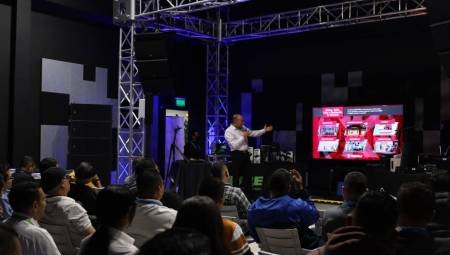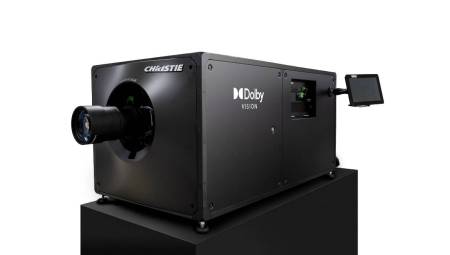 One of the last resources available to perform a distribution of antennas, for two different types of environments, is called Quadversity, allowing the user to use the transmitters in two different rooms with full coverage
One of the last resources available to perform a distribution of antennas, for two different types of environments, is called Quadversity, allowing the user to use the transmitters in two different rooms with full coverage
Juan David Moreno*
Due to the changes that the radio frequency spectrum has presented in recent years, we have been in the task of hiring a person, or in some cases, a team that is responsible for everything related to the coordination of frequencies and to take care of the entire event, and especially our wireless systems, operate in the right way.
However, there are more and more challenges we have in different scenarios such as theaters, churches, concerts, televisions, etc. On this occasion, we will present some of the configurations and tips to make sure that our system is operating in the right way and make sure to compensate for the losses that occur in each of the stages of the installation.
We will start by remembering that installing a multiroom system requires several stages and elements such as: BNC cables, boosters, antenna distributors, antenna combiners, antennas and a configuration of the equipment in terms of transmission powers and construction materials, the latter being, in most cases, not modifiable.
As a first step, we must have a recognition of the place and, if possible, a plot that allows us to see the distances between each of the spaces. Having an estimate of these distances will allow us to know the amount of antenna cable of (50 Ohms) that we require, and therefore, the loss that this same cable will have according to the manufacturer, thickness of the cable, if it is a single-filament cable or is a braided cable and the frequency at which we are going to operate our wireless systems. Remember that the higher the frequency of operation, the greater the loss when the information travels through the cable.
There are two general types of antenna combiners available: passive or active. Passive antenna splitting is performed with simple in-line devices that provide RF impedance adaptation for minimal loss. Even so, a single passive division results in a loss of about 3 dB, which can translate into a loss of distance.
To allow the combination of antenna signals and overcome the loss of passive combiners, active antenna combiners are used.
Using an antenna combiner, which is commonly used for In Ears, will allow us to avoid a loss of 3dB for each spliter (remember that for a 4-room installation 6 passive spliters will be necessary, which translates into a loss of more or less 18dB). Below, we will show you how we can avoid this and the importance of using active antenna combiners.
Now the question will be, what should be my concern when using antenna combiners to perform antenna distribution for various environments? Their only concern will be to compensate for the loss obtained with long cables, which exceed the loss of 5dB.
For this, the use of active antennas or the use of Boosters will be of great importance when it comes to compensating for losses in BNC cables. Always make sure that the basic antenna requirements are covered:
• Maintain gain and loss of +/- 5 dB
• Use as few antennas as practical
• Specify quality wireless systems for receiver RF performance
• Calculate the RF gain structure of the antenna system.
In short, when deciding where to place the antennas, it is not about "how far away can I move my antennas away?", but "what kind of cable should I use?" With the right combination of cable and amplifiers, you won't have any setbacks. Simply add or subtract the variables shown here, keeping in mind that you should try to keep the total loss at less than 5 dB.
Antenna system gain formula:
(Antenna gain) + (Total amplifier/amplifier gain) - (cable loss) - (Split loss)
Moreover, some receivers come equipped with built-in cascading BNCs for the antennas, eliminating the need for external antenna distributions. Typically, all cascade receptors must be in the same frequency range, and there are a finite number of receptors that can be cascaded. Check with the manufacturer for these limitations.
For newer digital equipment, use only 2 levels through your BNC connectors.
One of the last resources available to make a distribution of antennas, for two different types of environments, is called Quadversity which is included only in some receivers such as Axient Digital allowing the user to use the transmitters in two different rooms with full coverage and equal audio quality. To get an idea of this configuration we present an image that lets us see this type of configuration.
Keep in mind the following tips and tests that you must perform once the installation is finished including all the above:
• Once the installation and antenna coverage is finished, the user must go to the first enclosure and turn on the microphone with the antennas of that enclosure disconnected. The idea is to be able to visualize through a measurement software, called WWB6, that there is the least amount of signal captured by the other antennas, which are installed in the neighboring rooms. For this it is important to configure an adequate transmission power for the perimeter where it is going to be used. Then we will repeat this same step in all the rooms (the antennas of the room where the microphone is must be disconnected only to do the tests. After the tests we must check that everything is working and connected, both in the antennas and in the receivers).
• Having a receiver picking up x number of times the same information can be a problem for those signals that are in a different phase resulting in a phenomenon called Drop Out caused by multipath interference, for example.
• Keep in mind that the amplifier should always be at the end of the cable antenna, not at the end of the receiver, where what we would be amplifying is the floor noise. Some directional antennas may already have a built-in amplifier. Again, be careful not to amplify the signal too much!
• Another solution is to use multiple receivers and antennas tuned to the frequency of a single transmitter. The audio outputs of the receivers can be combined in a mixer to allow continuous signal pickup from multiple locations. However, some kind of audio level control should be employed, as the audio level of such a system will increase by 6dB each time the number of active receivers doubles. That is, if the transmitter is picked up by two receivers at the same time, the overall audio level will be higher at 6dB than when only one receiver detects it. Automatic mixers can control this effect.
• RF over fiber is a possible solution when it is expensive, but necessary in the following cases:
o For installations where the distance between antennas and receivers would cause unacceptable loss
o For long coaxial cables larger than 200 m (650 ft)
o When excessive gain is required to compensate for cable loss
o Careful planning and execution (no plug and play)
*Juan David Moreno is Market Development Specialist, Latin America of Shure.















